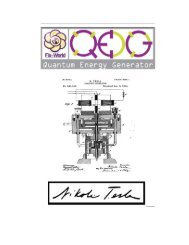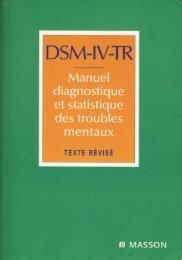Create successful ePaper yourself
Turn your PDF publications into a flip-book with our unique Google optimized e-Paper software.
P a g e | - 4 -<br />
Chapter 1: A Monetary History of Silver –<br />
3,400 B.C. - 1792<br />
“Money itself is an object of commerce, a form of wealth precisely because it has value<br />
and because any value exchanges in trade for an equal value (ex-ante).” –Anne Robert<br />
Jacques Turgot<br />
The question of whether or not gold and silver are money is even more important<br />
now than perhaps at any other time in history. The simple and short answer is yes,<br />
making the real question: Why are silver and gold money?<br />
It is important to first point out that silver and gold have been monies dating back<br />
more than 5,000 years. It is also worth noting that every inconvertible fiat 1 (paper<br />
money) monetary system in history so far has collapsed, with each “monetary unit”<br />
returning to its intrinsic value of zero 2 . It could be argued that not all of them went<br />
completely to zero, but as a practical matter the devaluations were so harsh that the<br />
currency was abandoned by the population as a medium of exchange—effectively<br />
making it worthless.<br />
The average fiat monetary system has lasted roughly 35 years, which ironically, is<br />
seldom if ever pointed out in academia. Is it just coincidence that an economic event<br />
(hyperinflation 3 ) came about at nearly the same time that fiat money came into<br />
existence? Hyperinflationary episodes have occurred more than 50 times in the 20 th<br />
century, compared to just one time throughout the rest of history, with that being in<br />
pre-revolutionary France when it decided to adopt the Assignat.<br />
Various economists have answered the question regarding why silver and gold, as<br />
opposed to other commodities, are considered money. A. J. Turgot 4 , Richard Cantillon,<br />
Carl Menger, and others have pointed out that it is because these two precious metals<br />
have the most marketability or salability.<br />
Aristotle named the attributes that the most ideal (commodity) money should<br />
have. It should be scarce, durable, malleable, divisible, homogenous, and transportable<br />
(having a high value to weight ratio). These virtues almost perfectly describe silver and<br />
1 Fiat money simply means a currency that derives its value from government regulation or law, such as<br />
paper money.<br />
2 Voltaire.<br />
3 Most commonly defined as beginning in the month in which monetary inflation has caused consumer prices<br />
to increase greater than 50%.<br />
4 “Turgot argues further that, while almost all commodities may more or less conveniently serve as money,<br />
gold and silver have been chosen as the ‘universal money’ because they possess in the greatest degree the<br />
various physical properties which peculiarly suit them to that role.” –Joseph Salerno, Money, Sound and<br />
Unsound




